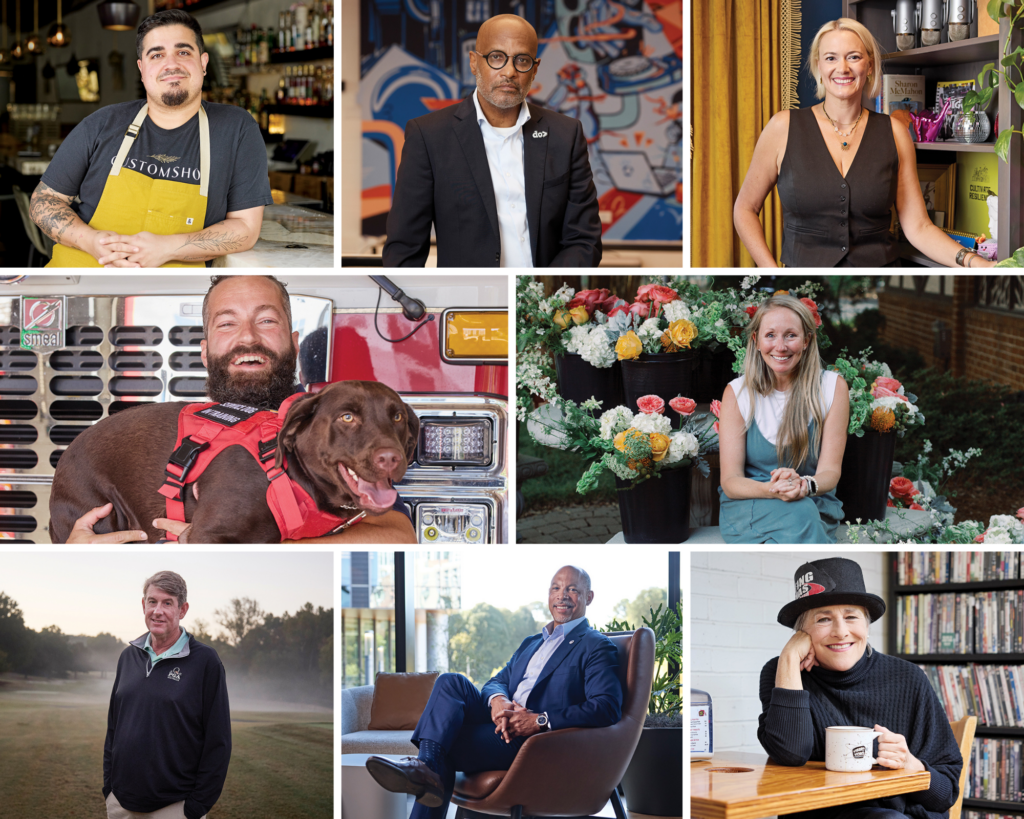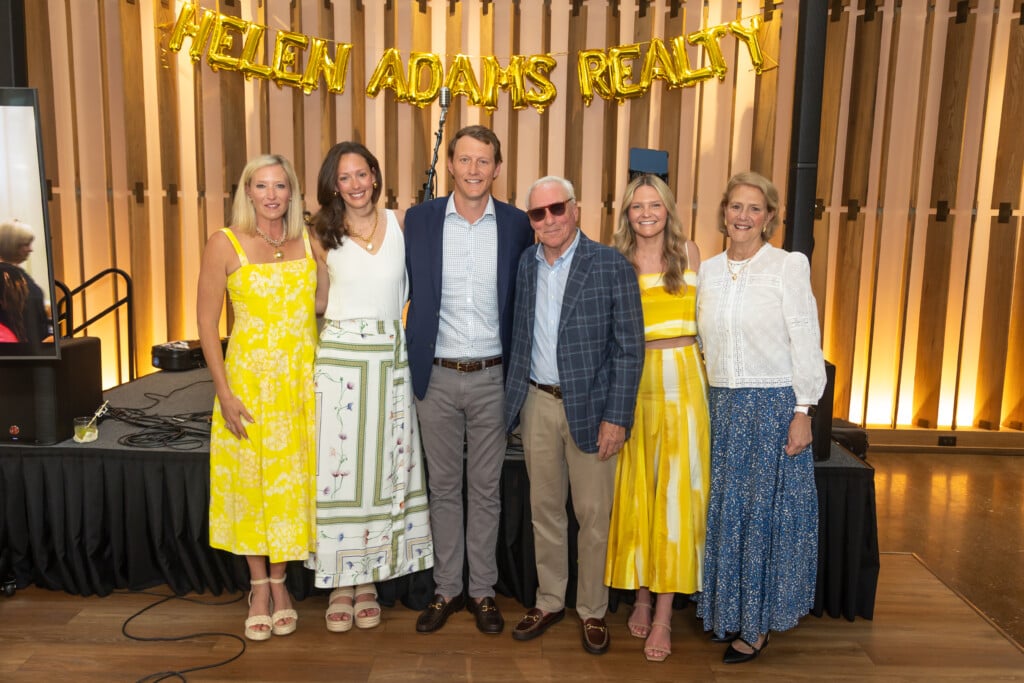2025 Charlotteans Of The Year: Gina Stewart
She was there at the creation. She’s still at the center

Some people claim it doesn’t exist, but there is a “cool” Charlotte, a Charlotte of creative people, of musicians, actors, and painters. If you want to find it, look for Gina Stewart. She’ll usually be there somewhere.
A Charlotte native—born at Presbyterian Hospital—she’s taken the stage in regional theater, Off Broadway, and music festivals. In the music scene of the 1980s and ’90s, she was the tiny girl with the big bass guitar. She was even in a couple of seasons of The Walking Dead. She never could decide between singing or acting—to her, they are the same. They’re all forms of creating, of collaborating, of getting people together to make something.
She’s 64 now, with slicked-back gray hair, crinkles around her green eyes, and black Converse High Tops. You can find her mostly at VisArt Video and Café, the sprawling complex that’s a video store—alleged to have the biggest collection of videos on the East Coast—a black-box theater, a garden alleyway filled with tables, and a tiny, counter-service café. Stewart is the executive director, and it hosts everything from readings to knitting nights to summer camps. VisArt is in Eastway Crossing, the east Charlotte shopping center that’s home to a variety of locally driven businesses, from Open Door Dance Studio to Upcycle Arts.
“The east side is the last frontier,” she declares—the last area of the city where eclectic businesses can find affordable rents. “A lot of what this is about is incubating new work,” she says. “If you want to do something you’re scared to do, do it here.” What makes Stewart special is her determination to help everyone around her make this city special.
Stewart points to a night in the mid-1970s, when she was 14 or so, and Fleetwood Mac came to the old Charlotte (now Bojangles) Coliseum. Her older sister—who became a dancer and an educator herself—wanted to go, and their mother insisted she take Gina. At the door, her sister told her to get lost and not try to hang around with her friends. So Gina found her way to the front, “close enough to see Stevie Nicks’ nose hairs.” A giant guy—picture a high school football player—took pity on her and hefted her up to his shoulders.
That was the moment when Stewart saw her life. She saw a band, working together. Not individual musicians but a collective: Oh, my God, I want to create things like this. That’s how she still sees herself: a collaborator, a centrifuge that pulls creative Charlotte together.
“I think I set out to start collaborating, and I can’t stop,” she says. “I was dedicated to ‘express yourself.’ Get the right people in the room at the same time. I want everybody to be in the same band.”
Charlotte has more creativity than anyone gives it credit for, she says. Its biggest problem is accepting that. “There’s a fundamental attitude that if you’re from here, you must not be any good.” It’s always been that way, she says. In 1990, when her second band, Doubting Thomas, was the only Charlotte band to get picked for a music showcase in Raleigh, “Charlotte lambasted us,” she remembers, laughing. “‘You pulled strings.’ If I had strings, I would have pulled them! Why can Charlotte not be proud?
“If we expect the world to recognize us, we’re going to have to recognize ourselves. Every one of us (in creative fields) is struggling and poor. Maybe it’s happening, that recognition that your own community is what’s important.”





